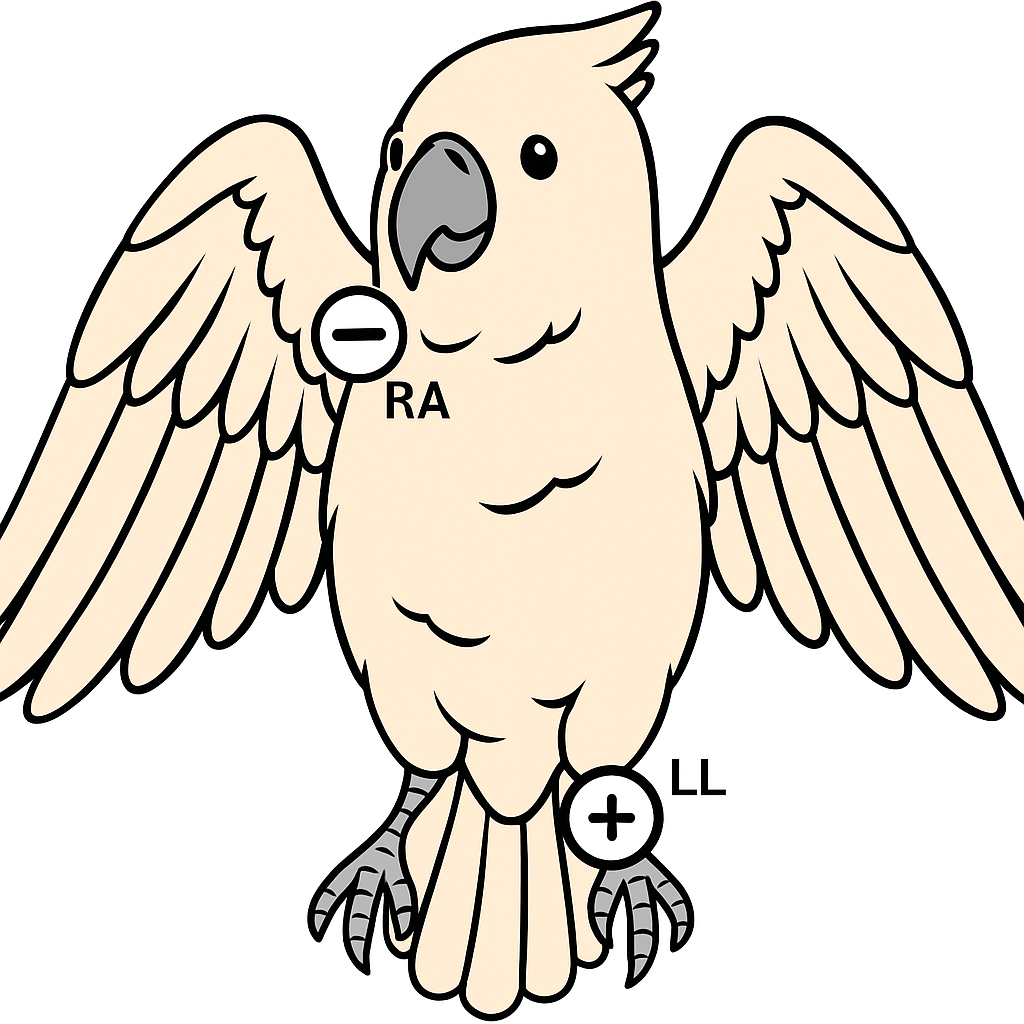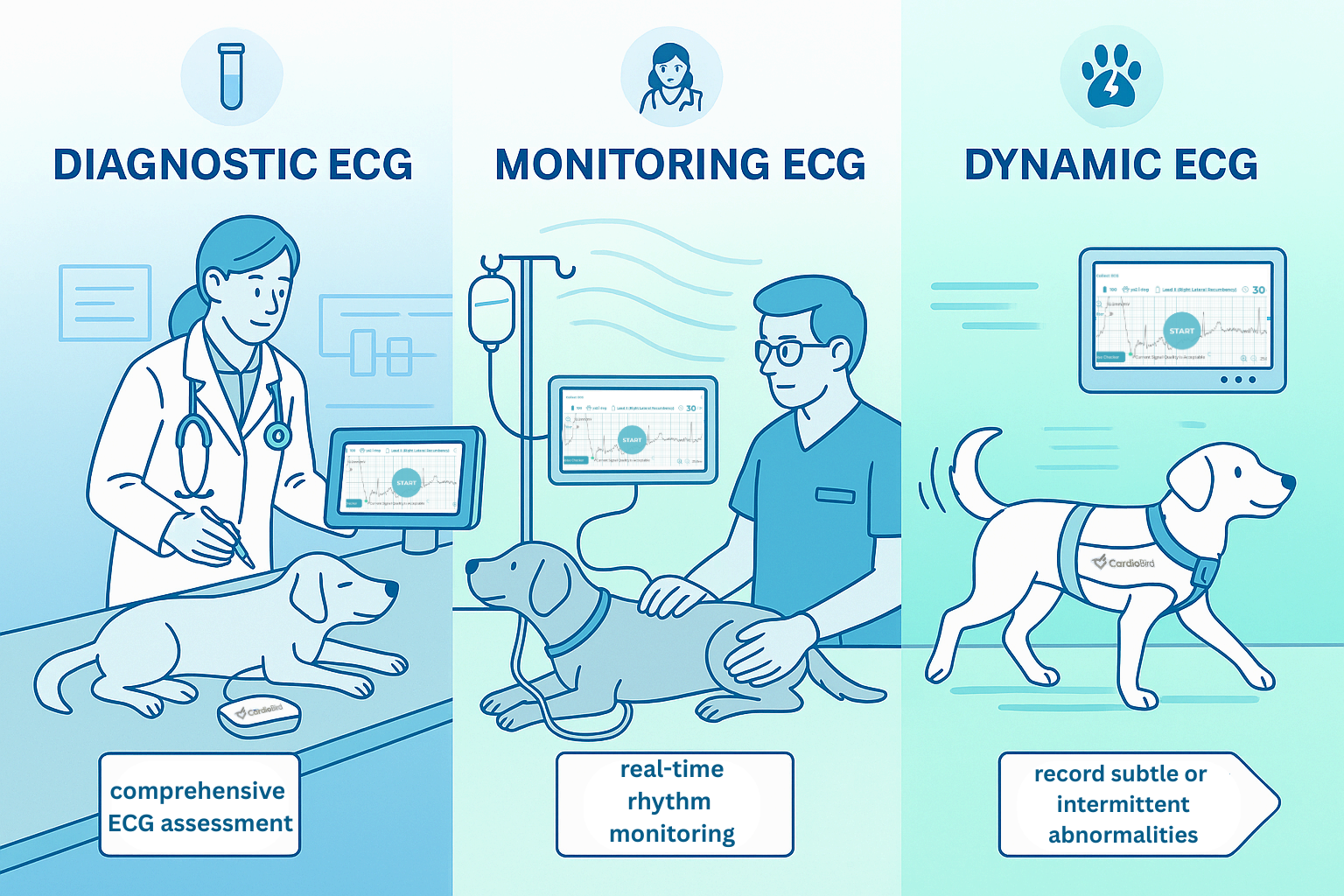Can CardioBird ECG Be Used on Animals Other Than Dogs and Cats?

Estimated reading time: 2.61 minutes
Absolutely! CardioBird is more than just a pet ECG tool—it’s a versatile, AI-powered service platform bringing advanced cardiac insights to a wide range of animals. From sugar gliders and guinea pigs to parrots, goats, snakes, turtles, and horses, CardioBird has already proven its value in clinics and field settings worldwide.
Here’s a practical, species-specific guide on how to use CardioBird ECG, and the unique value it offers for your diverse patients.

guinea pig
1. Small Mammals
(e.g. Ferret, guinea pig, chinchilla, hedgehog, sugar glider)
- Placement: Use the standard limb lead system. Place one contact just behind the right elbow (right forelimb region), and the other just in front of the left knee (left hindlimb region) to approximate Lead II.
Tip: Moisten fur with alcohol or saline for contact. Towel restraint works well.

parrot
2. Birds
(e.g. Parrot, eagle)
- Placement: Use the wing-to-leg (limb lead) system. Place one contact in the wing web (patagium, close to body) and the other at the stifle or tibiotarsal joint (leg). For small birds, both contacts can be placed on either side of the sternum (base-apex axis).
- Tip: Calm handling is key for clean traces.

turtle

snake
3. Reptiles
(e.g. Snake, turtle)
- Snakes: Place one contact just behind the head (cranial third), the other near the tail (caudal third), along the body’s axis.
- Turtles: Place contacts at the base of the right forelimb and left hindlimb, or over the heart region on the plastron and the opposite hindlimb.
- Tip: Clean skin/shell, use saline for better conduction.

goat
4. Ruminants
(e.g. Goat)
- Placement: Use the base-apex lead.
- Base: Place one contact at the right jugular furrow (lower neck).
- Apex: The other at the left 5th intercostal space, just behind the elbow.
- Tip: Clip fur if needed for good contact.

horse

horse (performance measurement)
5. Horses
- Placement: Base-apex system is standard.
- Base: One contact over the right jugular groove, lower neck.
- Apex: The other over the left 5th intercostal space, at the level of the elbow.
- Tip: Stand horse quietly with a handler. Moisten areas as needed.
- More than Health—Performance Measurement:
CardioBird isn’t just about detecting disease. In horses, our ECG technology is increasingly used to measure cardiac performance in athletes—helping trainers and veterinarians monitor heart function during training, optimize fitness, and ensure peak performance. Objective, real-time cardiac insights give you a new edge for equine sports medicine.
Why Use CardioBird for These Species?
- Early Detection: Many exotics and large animals hide heart disease until late stages. A quick ECG can make the difference.
- Safer Anesthesia: Pre-anesthetic and intra-operative ECG reduces risk—vital for exotics, ruminants, and horses.
- Performance Monitoring: In horses, CardioBird supports both health management and athletic performance optimization.
- Continuous, Accessible Monitoring: CardioBird is easy to use in clinics or remotely, for ongoing care and peace of mind.
Proud to Be Part of the CardioBird Community
By using CardioBird for all your patients—furred, feathered, scaled, or hooved—you’re at the forefront of veterinary innovation. Our community is expanding the boundaries of animal care every day. Share your experiences and invite colleagues managing exotics, ruminants, or horses to discover CardioBird!
Together, we’re elevating animal lives—one heartbeat at a time.


